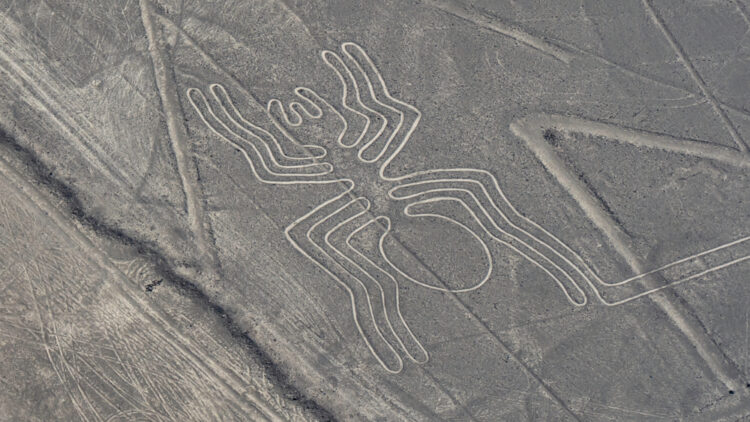Mankind has always sought to leave a mark on the world, a testament to our existence, beliefs, and art. Among the most puzzling and fascinating imprints of our ancestors are the ancient geoglyphs—colossal figures etched into the earth’s surface. These gigantic artworks depict a variety of figures, from geometric shapes to animals and humans, spread across diverse geographies. They are enigmatic remnants of ancient civilizations, their purpose, construction, and symbolic meaning often shrouded in mystery. From Peru to the United Kingdom, these awe-inspiring ancient geoglyphs are evocative reminders of the human psyche.
Nazca Lines
Located in the arid coastal plains of southern Peru, the Nazca Lines are among the most renowned geoglyphs in the world. These enigmatic figures sprawl over a vast area of approximately 450 square kilometers. Created between 500 BCE and 500 CE by the Nazca civilization, these images—ranging from simple lines to stylized hummingbirds, spiders, and monkeys—are etched into the desert floor by removing the reddish-brown iron oxide-coated pebbles to reveal the lighter earth beneath. The stark contrast in color makes these figures visible from the air or nearby hilltops. The Nazca Lines, remarkably well preserved due to the region’s dry, windless, and stable climate, are believed to have had ritual astronomical functions, although the exact purpose remains a mystery.
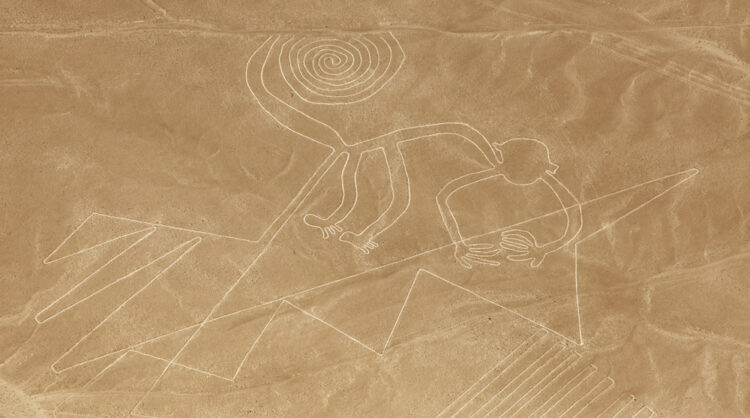
Uffington White Horse
Venturing across the Atlantic to the rolling green hills of Oxfordshire, England, we discover the Uffington White Horse. This prehistoric geoglyph, dating back to the late Bronze Age around 1000-700 BCE, is formed from trenches filled with crushed white chalk. The figure, a stylized representation of a horse spanning 110 meters in length, is located on the upper slopes of White Horse Hill. Its creation is attributed to the ancient Britons, although the specific tribe is unknown. The Uffington Horse, regularly cleaned (“scoured”) by local communities over the centuries, has been remarkably preserved, its whiteness contrasting starkly against the vibrant green landscape.
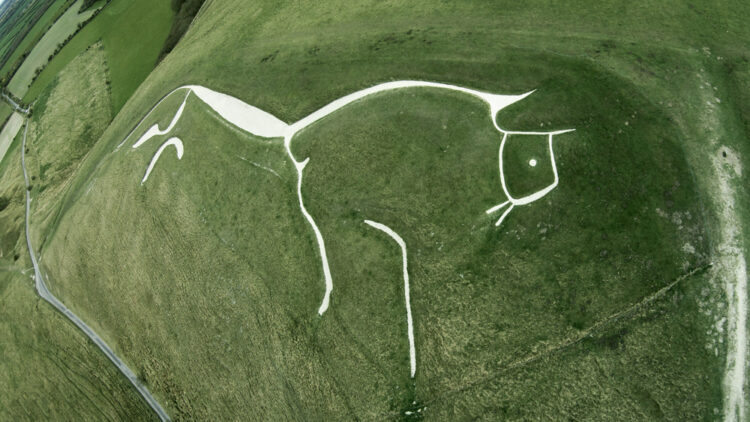
Atacama Giant
The Atacama Giant, located in the Atacama desert of Chile, is the largest prehistoric anthropomorphic figure in the world. Crafted between 1000 and 1400 CE, the figure spans an impressive 119 meters in height. The creators, likely the local Inca or Tiwanaku cultures, etched this massive figure into the desert floor, similar to the technique used in Nazca. The figure, thought to represent a deity worshipped by the local inhabitants, exhibits certain features like lines radiating from the head, possibly indicative of divine power. Despite the harsh desert conditions, the Atacama Giant is well-preserved and continues to captivate archeologists and tourists.
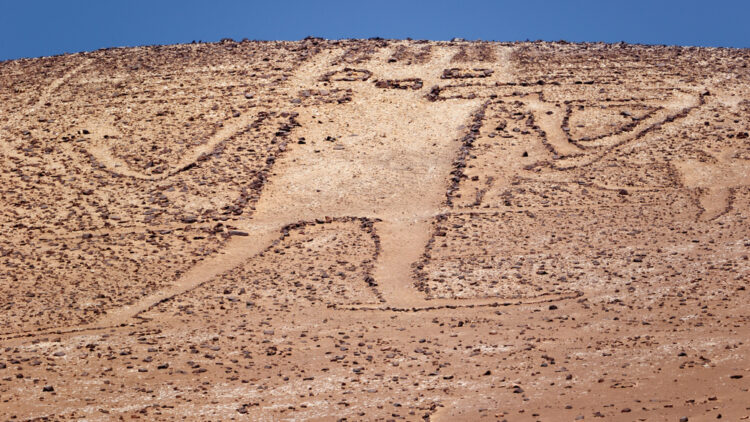
Paracas Candelabra
Returning to Peru, the Paracas Peninsula is home to another mysterious geoglyph, the Paracas Candelabra. This large-scale figure, etched into a hillside facing the Pacific Ocean, measures approximately 180 meters tall. Dating back to 200 BCE, it is believed to have been created by the Paracas culture, although theories also point toward the Nazca civilization due to stylistic similarities. The figure, resembling a candelabrum or a trident, is created by digging trenches into the soil. The Paracas Candelabra’s coastal location has exposed it to winds and potential erosion, but it remains remarkably visible, its purpose still shrouded in mystery.
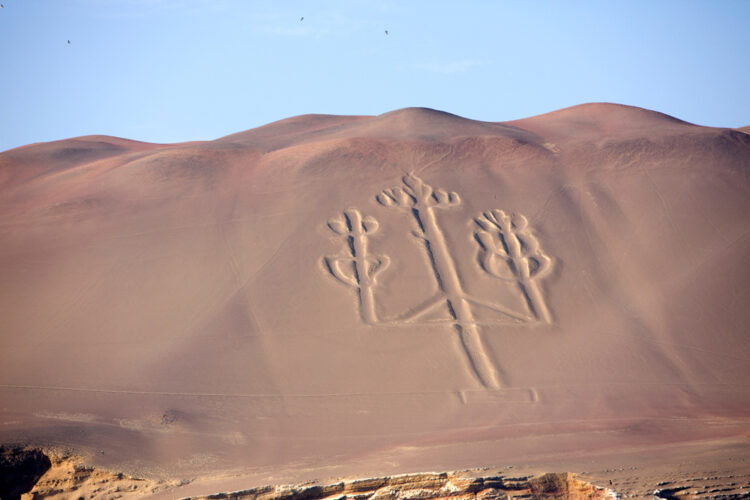
The Blythe Intaglios
The Blythe Intaglios in the Colorado Desert, California were discovered from the air in the 1930s, by early aviators. These figures are the largest known geoglyphs in the United States. The figures, including humans and animals, were created by scraping away the dark desert pavement to reveal the lighter sand underneath. The largest human figure is nearly 54 meters long. These figures are thought to have been created by the Mojave and Quechan indigenous tribes, with estimates dating back a thousand years, although some propose they may be much older. The desert’s dry climate has helped preserve these figures, but recent human activities have necessitated protective measures to ensure their continued existence.
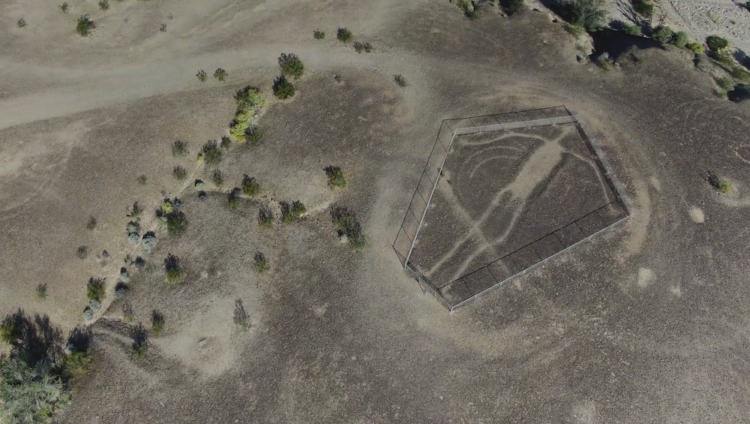
These colossal artworks, spread across diverse geographical regions, were created by our ancestors with rudimentary tools and without the ability to view their work from the air. This fascinating legacy, imprinted on the surface of our planet, continues to puzzle and captivate us. They are reminders of ancient civilizations and their beliefs, their artistic expressions, and their ability to manipulate the landscape on a grand scale.


